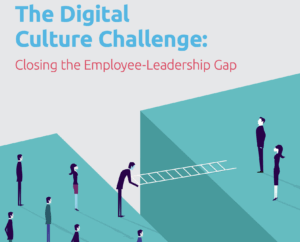by: Christine Penchuk, Search Strategy Marketing
“Digital transformation is more than just digital; it’s about remodeling businesses to be agile, innovative, and customer-centric at their core.” This is the heart of the message from Altimeter’s report by Brian Solis, with Jaimy Szymanski, on the six stages of digital transformation, and the second topic in our Digital Business Transformation series for CMOs — and company change agents.
Companies who are ready to make leaps and bounds when it comes to digital transformation need to understand that digital transformation isnot just about technology. Interestingly, technology is simply the vehicle that will take your company to where it needs to go in order to effectively communicate with its ideal buyer personas. If done right, digital transformation will bring you closer to your existing customer base, and will effectively attract new customers to the fold.
The Customer is at the Core of Digital Business Transformation
While it’s true that companies initially embrace technology because they understand that it’s time to modernize systems and processes in the business ecosystem, and to adapt to compete in the digital economy, there’s more that should be understood. A successful transformation must be driven by a clear understanding of the purpose and vision — by motivated people. And this vision should start with the customer journey.
Company change agents cannot inspire change without customer empathy — and the knowledge of how and why new systems, preferences and values are being made.
“Digital transformation maturity often starts with alignment around a holistic customer experience.” –The Race Against Digital Darwinism: Six Stages of Digital Transformation
Companies that succeed in digital transformation often begin by coming to an understanding of the customer, intimately grasping the nuances in their behavior, expectations and predilections. By focusing on customers, companies get to know their unique customers’ journey, including what influences their decision-making, and can then go on to improve the experience for all customers.
Digital Transformation is a Journey, Not a Destination
While Altimeter defines the six steps companies traverse on their journey into digitaltransformation, it stresses that the transformation is a journey, with each step defined by attributes that span different facets of the organization. And although it’s natural to associate digital transformation with marketing, the truth is that there isn’t one department in an organization that can claim the lead role and require others to fall in line. For sea change to transpire within an organization, true change agents must step forward from many departments to break down silos and collaborate with other leaders and executives to initiate and foster change.
As noted in our “Digital Business Transformation” introductory blog, the six stages of Digital Transformation are:
• Business as Usual: Companies operate under the historical perspective of customers, processes and technology, thinking that will meet the digital needs.
• Present and Active: Pockets of experimentation pop up in the company, leading to some transformation of specific services and processes, but not a general awakening.
• Formalized: Experimentation becomes intentional while executed at promising and capable levels. Change agents begin to seek executive endorsement.
• Strategic: Groups begin to recognize the advantages of collaboration as their research, work and shared insights inspire new strategic road maps for digitaltransformation.
• Converged: A dedicated digital transformation team forms that spans across all divisions of a company, guiding strategy and operations for improved business based on customer-centric goals.
• Innovative and Adaptive: Remember, this is a journey, not a destination. This is nota final stage so much as a new state where the company is more nimble and agile and ready to change in reaction to changing customer needs. This is a company prepared for the present and the future!
Digital Transformation, Done Right, Creates Loyal Customers
Unlocking a deep level of engagement with your customers can be achieved by learning, in depth, the customer journey throughout the process of digital transformation. Delivering an experience that speaks directly to your customer’s needs in the moment — with immediacy and relevance — will result in a high-quality experience for customers and better business results for brands.
As you delve further into this discussion about digital transformation in the coming weeks, we encourage you to see yourself as a change agent. The journey of digital transformation will inspire changes that positively affect not only the relationship that you have with your current customer base, as well as effectively attract new ones.






Leave a Reply